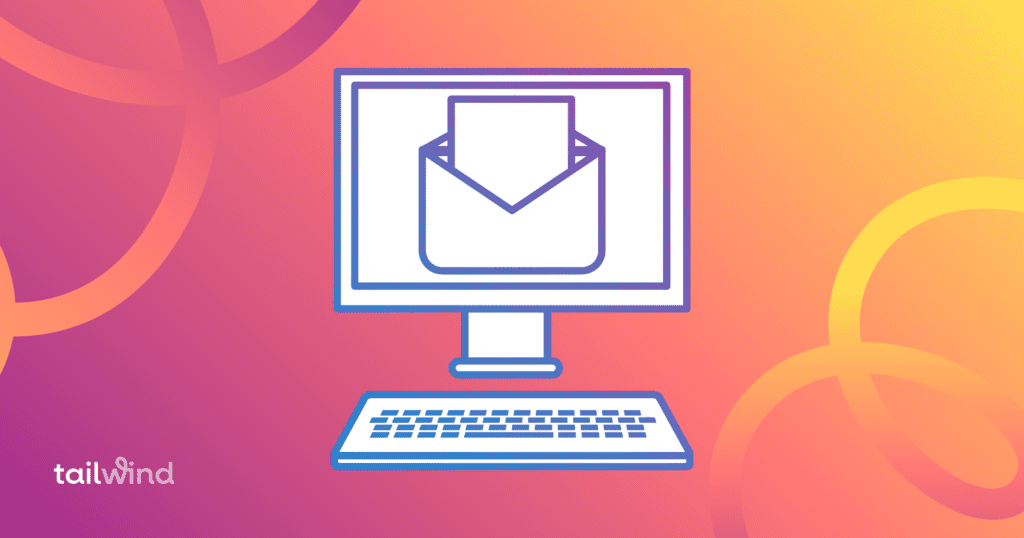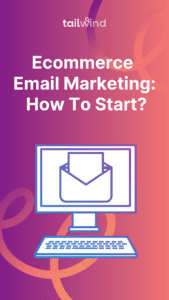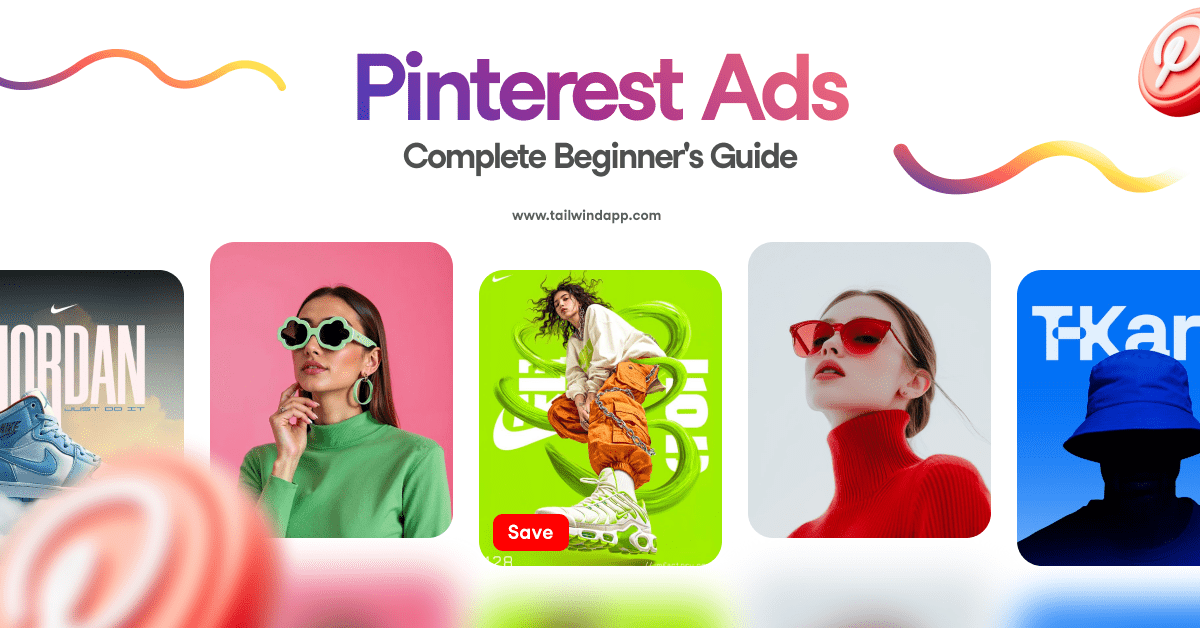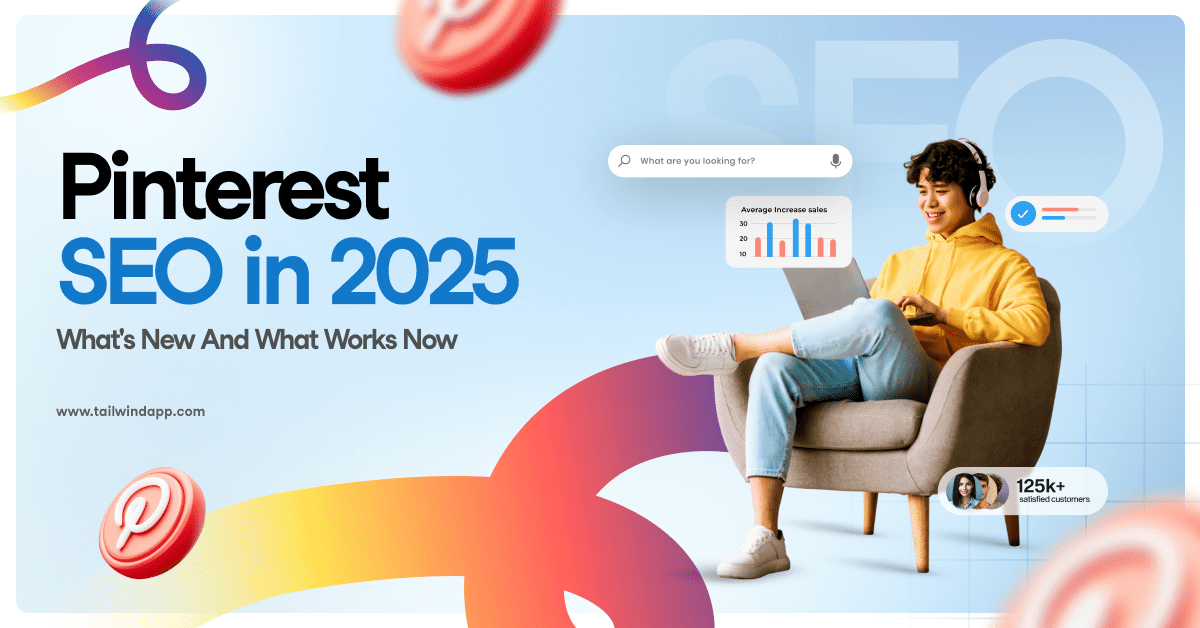
Email marketing is an inseparable ingredient of a successful online store or ecommerce business.
After all, email marketing campaigns are integral to building ecommerce brand awareness, trustworthiness, and customer loyalty, and they foster a healthy rapport with potential new customers and existing customers. Not to mention email marketing’s lead generation, revenue generation, and traffic generation capabilities — all of which serve as the lifeblood of ecommerce businesses worldwide.
Email isn’t going away anytime soon. After all, it’s one of the few — if not the only — digital marketing channel wherein the sender has virtually complete control of the content and its distribution without having to rely on third-party internet infrastructure to do so.
Email lists are virtually proprietary data that only YOU own, control, and possess. They serve as YOUR unparalleled advantage over the rest of the competition. Email is a vital mechanism to boost sales and customer lifetime value for you to grow your ecommerce business and project its trajectory regardless of its size.
That being said, your email marketing strategy will determine the mileage you get out of your emails — much in the same way your social media strategy or online marketing strategy does.
Your ultimate goal is to build relationships, share value, and provide opportunities to clients beyond what you would usually offer those who aren’t subscribed to your email marketing list.
Think of your email contacts as your personal list of VIPs who have purchased or interacted with your ecommerce business and need personalized, targeted messaging.
Don’t know where to start? You’re in luck. We’ve put together a guide on how to get the most out of your ecommerce email marketing campaigns.
Best practices for ecommerce email marketing
Email marketing is 40 times more successful at drawing new customers than marketing on Facebook or Twitter because of its versatility and personalization capabilities. Moreover, ecommerce email marketing has the highest success rate in delivering a return on investment for online ecommerce store business owners that leverage it the right way.
Quick tip: If you want to grow your email list with performance marketing, check out Tailwind Ads.
Don’t overload your target audience with emails
Consistency is key in ecommerce email marketing. But if you constantly bombard your audience with promotional emails every single day, your emails will most likely end up in the spam or trash folder. Worse, you might turn off a majority of your already-captive audience and risk they will opt out of receiving your emails…for good.
The idea is to find that balance between sending out several emails on a daily basis to their annoyance and sending so few that you fall completely out of their consciousness. Too much and you’ll risk turning off customers, and too few might have them tune you out for good. Out of sight, out of mind.
Creating attention-grabbing subject lines
Sales emails are extremely effective drivers of customer engagement and revenue generation. But they come with a caveat: your emails actually need to be opened for your email marketing campaigns to work.
And the only chance you have to make a good impression is by creating attention-grabbing subject lines. After all, 64% of recipients open or delete emails based on subject lines.
Good subject lines require the perfect balance of informativeness and intrigue that drives your readers to open your message without having to resort to bait-and-switch tactics that will have your readers opt out for wasting their time.
Here are some do’s and don’ts on how to make better subject lines that your readers will open, read, and click through.
DO:
- Keep it concise and punchy. Emails with shorter subject lines tend to get delivered. Moreover, shorter subject lines with 50 characters or less are more likely to be opened than those that exceed 50 characters. They are also more likely to be clicked through. Brevity is the soul of wit, so keep it short and sweet.
- Build anticipation. Subject lines need to be witty, unique, and interesting. Avoid using tired tropes and overused clichés. Instead, give them an enticing hook that captures their attention and piques their interest enough to open your email.
- Focus on delivering value. The ideal subject line straightforwardly communicates the value that readers will get by opening your email. To entice them to click, the subject line should make a persuasive promise that the email’s content will be beneficial to the reader in some way, providing them with valuable information or messaging to improve their lifestyle or business. Answer their question: “What’s in it for me?”
- Foster trust. Successful ecommerce brands prioritize trustworthiness in their subject lines. Don’t try to finagle your customer into opening your email with chicanery because you WILL lose that trust. Be consistent with the promises you make and respect your recipient — grammatical and/or spelling errors will detract from the latter.
DON’T:
- Write your entire message in the subject line. Long subject lines are often a one-way ticket to the spam or trash folder. Reserve your message for the body of your email.
- Manufacture clickbait. There is more clickbait on the internet and social media than you can shake a stick at, and your audience knows that all too well. Don’t add to their grief by baiting them on your email marketing list.
- Use filler words. Email copywriting works best when you write like you speak, but using words like “hey” or “um” or other filler words just wastes your space and your readers’ time by adding words that add no value.
Optimize your emails for mobile devices
Approximately 42% of emails are opened on mobile devices, while 85% of individuals use smartphones to check their inboxes.
It’s clear that optimizing for mobile can and will significantly impact the success of your email marketing strategy as it relates to open and click-through rates.
Users are more likely to open and click through emails that are accessible and readable across all devices. Emails optimized for mobile devices can see open rates of as much as 15% more than emails that aren’t. Prioritizing mobile optimization acts as a catalyst to increase open rates, promote engagement, and ultimately contribute to a more successful result in your email marketing strategy.
Optimize for deliverability
You can’t engage — much less convert — if your email doesn’t reach your intended recipient at all. And committing certain email marketing gaffes may affect the deliverability of your messages, not to mention besmirch your reputation as a sender. To avoid having your email bounced or delivered straight to the spam folder, here are some do’s and don’ts to follow when hashing out the content of your email marketing campaigns:
DO:
- Be concise. Maintain a subject line not longer than 50 characters long. Any subject line longer than 50 characters may be flagged as spam by email service providers. Sticking to 35 to 50 characters also forces you to be intentional about personalizing and tweaking your subject lines for greater impact — and greater overall success.
- Be relevant. Send relevant content tailored to what your email subscribers have signed up for. Sending them irrelevant content will have them running for the hills or mark you as spam. On the other hand, the more frequently they open and click through your emails, the higher your reputation becomes as a sender.
- Keep the body short and engaging. Increase your readability and make your emails easy to skim through by using a mixture of visual content, short paragraphs, headings, and bulleted lists. Always focus on how your product or service solves your audience’s primary pain points. No need to meander or belabor a point. Remember, brevity is key.
DON’T:
- WRITE IN ALL CAPS. Writing in all caps is a red flag for every internet and email service provider that may have you relegated to the spammer’s penalty box. Avoid using symbols, bold text, unnecessary punctuation and question marks in your email body because it might trip up spam filters.
- Avoid using words that may trigger spam or phishing filters. Using certain words associated with spam, fraudulent activity, or phishing attempts may have your legitimate email correspondences forwarded straight to the spam folder or the trash. Avoid using them at all costs.
Crafting Effective Calls-To-Action
A call-to-action (CTA) is a button or link that encourages your recipients to perform an action, such as subscribing, signing up for a free trial, joining a referral program, using a discount code, or buying a product. It’s the ultimate goal of your email marketing communications.
Your success in your ecommerce email marketing campaigns is dependent on how you write, place, and design your CTA.
CTAs need to be noticeable, concise, and pertinent to the message of your email. Utilize urgent, action-driven language and establish a sense of immediacy to motivate your subscribers to take action.
Here are some best practices in creating CTAs for effective ecommerce email marketing:
- Make your CTA button pop. Give yourself a minute to look at your overall email design and use a color scheme that works and stands out for your CTA. Make it pop, make it stand out, but make sure it doesn’t clash with the other elements of your email. Oh, and make it large enough to be easily found and clicked through.
- Avoid cluttering your email with elements that detract from your CTA. The adage “less is more” rings true for your CTA. If your email has too much gaudy visual noise, your CTA won’t be easy to find. Use white spaces liberally so that your CTA stands out.
- Direct your readers to your CTA. Many successful ecommerce email marketing strategies use cues to direct their readers to their CTA buttons. Try using subtle yet direct imagery that points to your CTA, which results in higher CTR and more store visits!
Analyzing Performance
Ultimately, it doesn’t matter how well your emails are optimized and how tight your subject lines are if you can’t measure the results of your email marketing efforts or determine whether they actually matter at all. That said, what are your goals and how should you measure them? Here are five ways you can measure and analyze how well your ecommerce email marketing strategy is doing:
- List growth. The larger your subscriber list is, the greater potential you have in turning potential customers into repeat customers. All of this trickles down to dollars and cents.
- Open and click-through rates. Your open rate is determined by how many delivered emails were actually opened by your email list. On the other hand, your click-through rate is determined by how many delivered emails generated at least a single click. Both metrics are barometers of how well your email marketing strategy engages your readers. Lopsided numbers indicate what you need to tighten up.
- A/B test results. A/B testing requires splitting your email subscribers into three segments: an A group, a B group, and a C group, and then sending the A and B groups two email variants with separate designs, messaging and calls-to-action. Then, after using your analytics to measure which email performed better in terms of sales or engagement, you craft the version which works best for your final group of recipients, representing group C. A/B testing is an essential part of successfully personalized email campaigns and strategies that work towards building your pool of loyal customers.
Sounds like a handful? Well, luckily, if you’re a small- to medium-sized business owner, you don’t have to do everything yourself or have to pay exorbitant amounts to a third-party online marketing agency to do it for you thanks to the rise of artificial intelligence(AI)-enabled email marketing suites that do the heavy lifting for you at a fraction of the price.
AI-Driven Solution For Ecommerce Email Marketing
Ghostwriter is a robust, full-featured AI-driven social media and ecommerce email marketing solution that does everything from creating social media posts, captions, product descriptions, landing pages, blog post content, and everything you need to run a successful automated marketing campaign across every communication channel that matters in this day and age.
It works like most AI writing tools: simply feed it a prompt of what you’re writing, what your marketing goals are, any particular keywords or turns of phrase you wish to use, and a call-to-action. And voila! Within seconds, you’ll have email copy that’s ready to go.
Here are just several examples of marketing content you can produce to run successful ecommerce email campaigns with Tailwind Ghostwriter:
- Welcome emails. The first step to building a relationship with new subscribers is by sending them a welcome email and hyping them up about what your product or service can do for them. Remember, as an online store or ecommerce business owner, you only have one chance to make a good impression — make your welcome email count.
- Promotional emails. Promo and discount codes are an excellent way to draw new customers and reward loyal customers, besides converting potential customers who might still be on the fence about taking action on what you have to offer. You also have plenty to gain from learning about what your customers like and don’t like, besides learning about their purchase history and buying habits.
- Product launch emails. Product launch emails are among the most effective and important promotional emails because they can encourage customers to buy limited-edition products and drive revenues.
- Abandonment emails. Every online store owner knows how incredibly infuriating it is to have a potential customer add items to their cart only to leave their purchase hanging afterwards — that’s where abandoned cart emails come in as one of the most effective remedies and ecommerce emails you can send out to recover a potentially lost sale.
- Customer satisfaction. It’s critical for every online retailer to periodically check in with their existing customers to determine how things are going with their purchase and how smooth they found the sales process. Think of it as a way to nip potential problems in the bud before they spiral out of control. Moreover, asking your customers about their feedback drives loyalty because you demonstrate how much you value their feedback, and that translates into increased order value.
From automated email campaigns, welcome emails, post-purchase emails, cross sell emails, customer feedback emails and surveys, and transactional emails, Tailwind Ghostwriter makes the entire process of running targeted email campaigns with consistent marketing messages that work for your bottom line easy.





